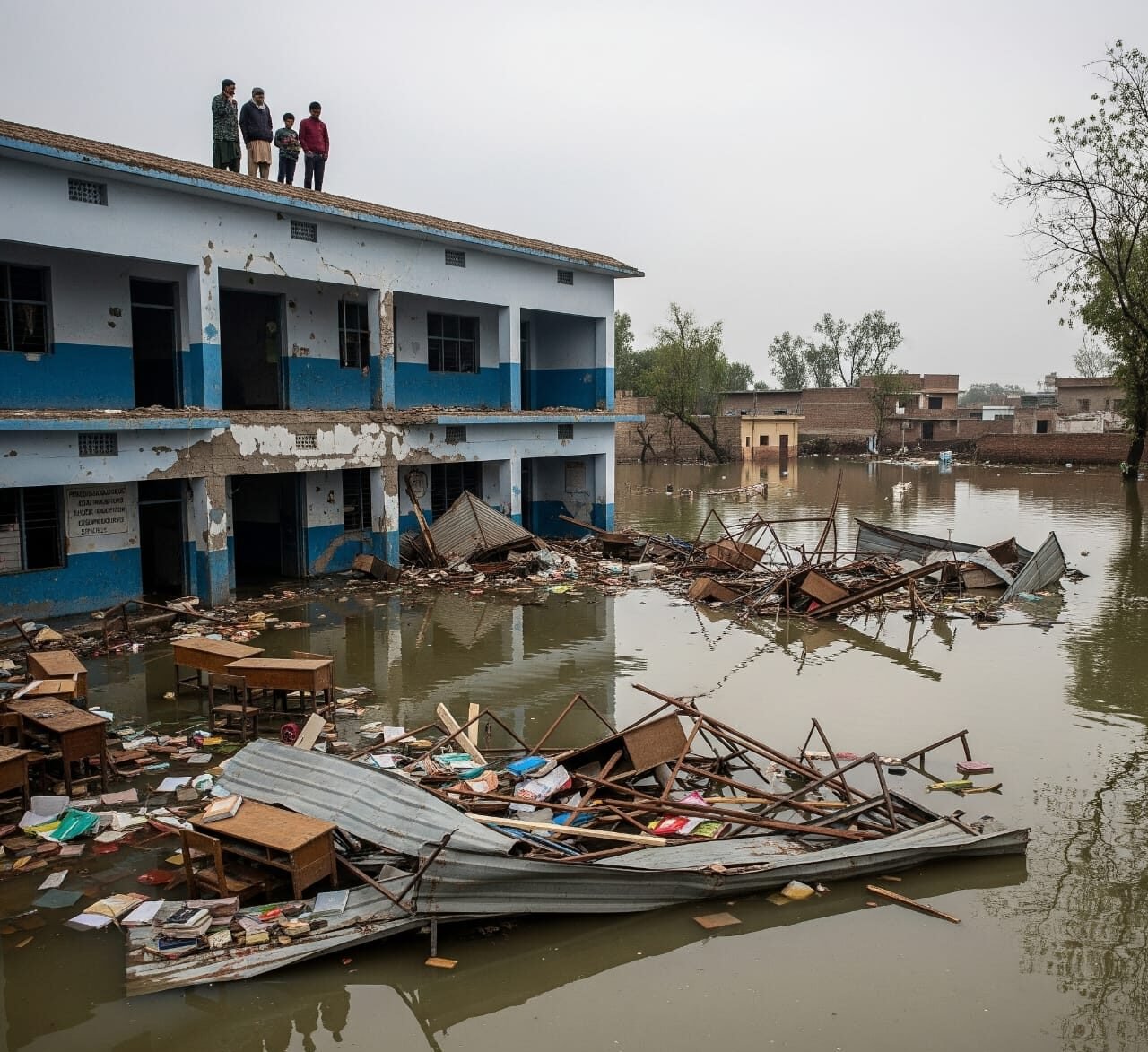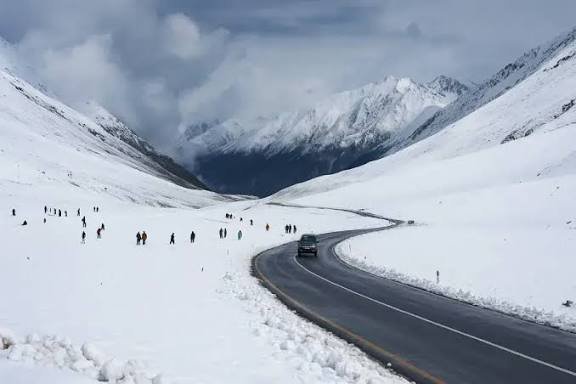The latest spell of heavy rains and flash floods in Over 60 Schools Destr-oyed, 414 Dam@ged In KP Rains And Floods Official figures reveal that more than disrupting learning for thousands of students.
Widespread Destruction in KP
KP, known for its rugged mountains and vulnerability to floods, has seen relentless rains over the past few weeks. Overflowing rivers and streams swept away villages, damaged crops, destroyed roads, and crippled infrastructure. But the collapse of dozens of schools has emerged as one of the most heartbreaking impacts of the disaster.
Classrooms are now filled with mud and debris, while some buildings have cracked walls and standing water, making them unsafe. In many areas, students and teachers have been forced to abandon schools altogether.
Education Under Threat
The destruction of 60+ schools and damage to hundreds more has put the education of thousands of children at risk. For many families, schools were more than just learning spaces — they were safe havens, especially in conflict-affected and poverty-stricken areas.
Parents fear their children’s future is at stake, with exam preparations disrupted and teachers losing vital study material and records. Some teachers have even lost their homes in the floods, making the situation even worse.
Government’s Response
The KP government, along with the Provincial Disaster Management Authority (PDMA), has started assessing the full scale of losses. Officials admit that restoring schools will take time and heavy funding.
Temporary classrooms and tents are being planned for areas where permanent buildings have collapsed. The provincial education department has also sought help from the federal government and international donors, acknowledging that the crisis is too big for KP to handle alone.
Financial & Human Cost
Rebuilding even one school in rural KP costs millions of rupees. With over 60 schools gone and 400+ damaged, the repair bill is expected to run into billions — at a time when Pakistan’s economy is already under immense strain.
But beyond money, the human cost is far greater. Experts warn that children out of school due to disasters often drop out permanently. In rural KP, where child labor and early marriages are already issues, this disaster could push many children further away from education.
A Painful Déjà Vu
This isn’t the first time floods have devastated KP’s education sector. The 2010 super floods destroyed thousands of schools nationwide, many of which were never rebuilt. Educationists stress that Pakistan cannot afford to keep repeating the same mistakes — this time, schools must be rebuilt with disaster-resilient designs to withstand floods and earthquakes.X
Stories From the Ground
In districts like Swat, Dir, and Chitral, heartbreaking stories are emerging. Children have watched their schools collapse, and families already struggling with poverty now see education slipping further away.
“We cannot risk holding classes in waterlogged or cracked buildings,” said a principal from Lower Dir. “If the government doesn’t act quickly, our children may lose an entire academic year.”
NGOs & International Aid Step In
Relief groups and NGOs have started setting up temporary classrooms, providing stationery, and offering psychological support for children traumatized by the floods. UNICEF and other agencies have emphasized that restoring education is just as important as providing food and shelter, as schools bring hope and stability during crises. READ NEXT https://elevenpakistan.com/shehbaz-cabinet-donate-one-month-salary-to-kp/
Aid workers are also urging authorities to adopt a “Build Back Better” approach — ensuring that new schools are safer, stronger, and more resilient.
The Climate Change Connection
Climate experts have linked the scale of these floods to climate change. Despite contributing less than 1% of global carbon emissions, Pakistan is among the most climate-vulnerable countries in the world. Experts warn that floods, glacial lake bursts, and extreme weather will only become more frequent.
The destruction of schools in KP shows why Pakistan urgently needs to integrate climate adaptation into infrastructure planning, especially for education and healthcare.
A Call for Urgent Action
Educationists and community leaders are calling this a national emergency. They warn that if action is delayed, Pakistan risks creating a “lost generation” — children deprived of learning due to repeated disasters.
The road ahead will be tough, but one thing is clear: without schools, the future of thousands of children in KP hangs in the balance.



